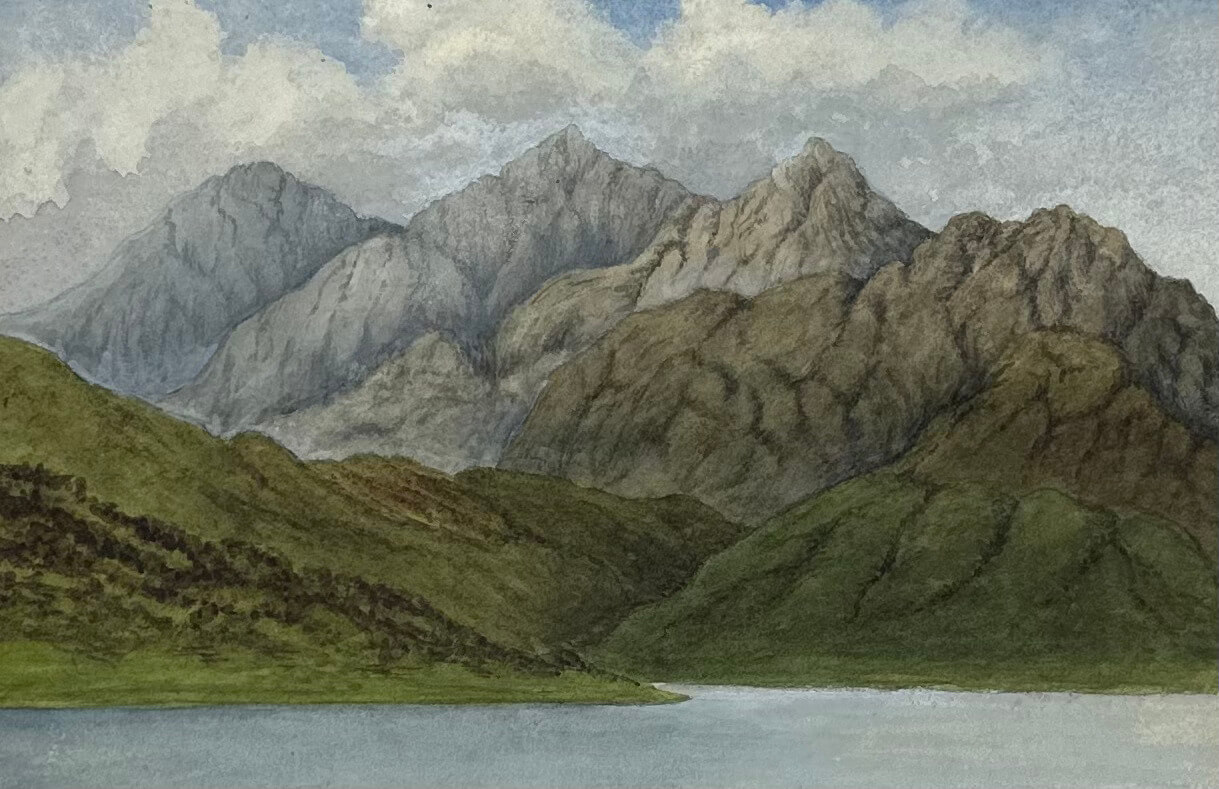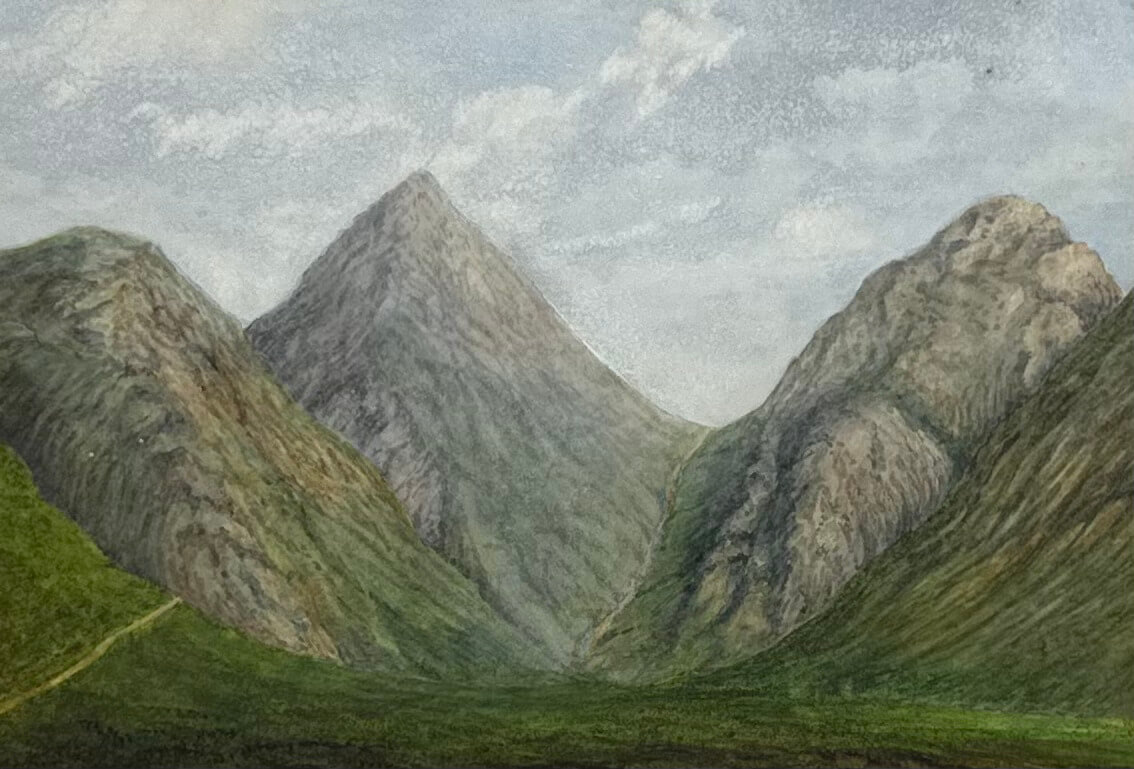
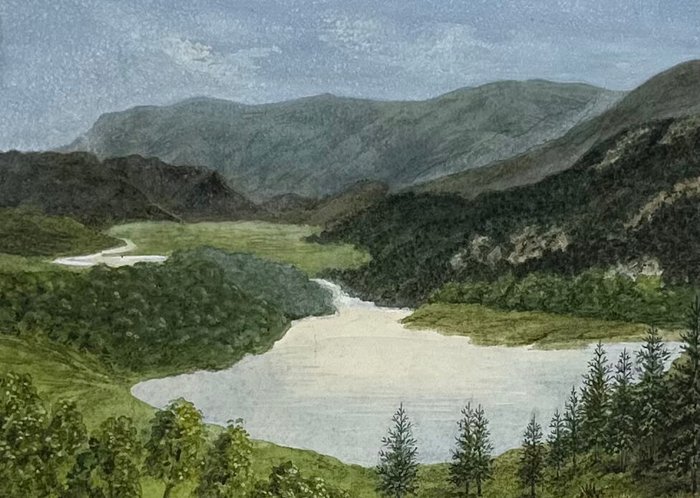

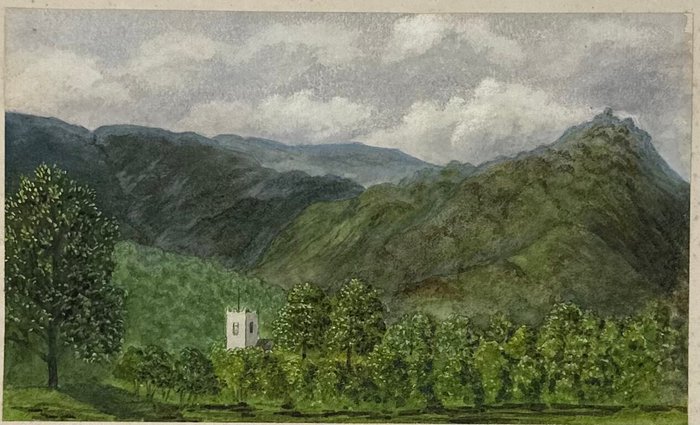




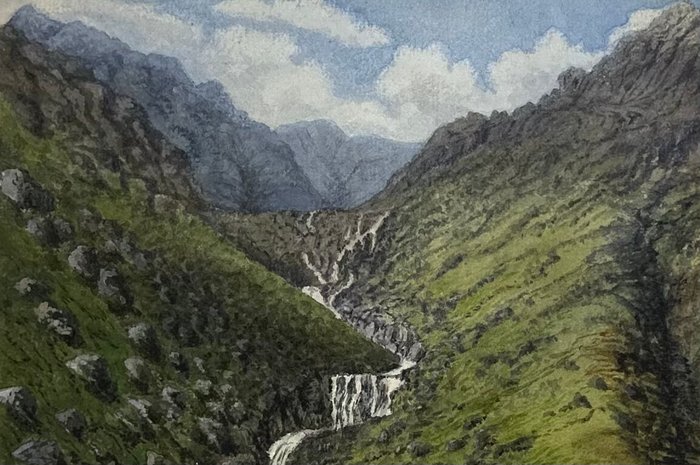







#MB98
Ca. 1870s
Oblong Folio (ca. 31x43 cm). 23 leaves. With 22 mounted watercolours, the majority ca. 17x25 cm (6 ½ x 10 in), others slightly larger or smaller. All watercolours with period ink captions in the lower corners of the album leaves. Period dark green gilt tooled half morocco with green pebble-grain cloth boards and moire endpapers. A very good album.
Album of excellent watercolour drawings made on the spot by an anonymous 19th century artist showing the natural beauty of the English Lake District and western Scotland. The majority of the watercolours show different views of the famous English lakes – Coniston Water, Rhydal Water, Grasmere, Easedale Tarn, Grisedale Tarn, Thirlmere, Derwent Water, Patterdale, Ullswater – with occasional islands, churches, cottages or rural fences on shore, boats in water et al. There are also impressive pictures of the surrounding hills and mountains: a view of Langdale Pikes taken from Lowood hotel, Mt. Helvellyn, St. Sunday’s Craig, colourful picture of Dungeon Ghyll Force waterfall, interesting view of the Bowder Stone depicted without a staircase (it was added not earlier than 1890) et al. The ‘Scottish’ views include a stunning view of the renowned bay of the Oban town with Kerrera and Mull Islands, several mountainous panoramas showing Ben Cruachan, ‘The Shepherds, Glen Etive’ (or ‘The Herdsmen of Etive’), pictures of the mountain pass of “Murford”(?) and of the magnificent Falls of Foyers.
“The Lake District is a mountainous region in North West England, a National Park of the United Kingdom (since 1951). All the land in England higher than three thousand feet above sea level lays within the National Park, including Scafell Pike, the highest mountain in England. It also contains the deepest and longest lakes in England, Wastwater and Windermere, respectively. A popular holiday destination, it is famous not only for its lakes, forests, and mountains (or fells), but also for its associations with the early nineteenth-century poetry and writings of William Wordsworth and the other Lake Poets” (Wikipedia).











